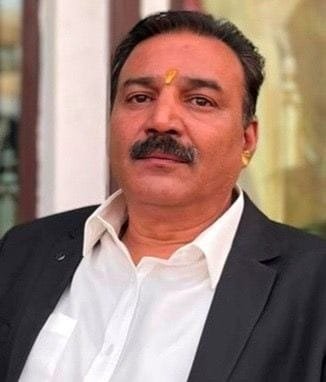Unearthing the Ancient Roots of a Postcolonial Invention
By Satish Mahaldar
From Srinagar to Geneva, and the Spectre of Abhinavagupta: How an Idea Forged in Fire, Ice, and Philosophy Is Being Recast on the World Stage
In an era marked by ideological fractures and postcolonial fatigue, few places bear the weight of historical memory like Kashmir. As nuclear powers square off in the high-altitude corridors of Ladakh and a new Cold War simmers across South Asia, one elusive term continues to echo through the discourse of diplomats, dissidents, and scholars alike: Kashmiriyat.
But what truly is Kashmiriyat? A timeless doctrine of peace? A romanticised construct? Or a political instrument crafted to veil deeper civilisational fault lines?
An Idea Born in Dialogue, Not Dogma
Long before conflict etched scars across its valleys, Kashmir was a realm of ideas—shaped not by swords, but by samvāda (dialogue). From the sacred springs of Anantnag to the icy silence of Amarnath, the region emerged as a sanctuary of metaphysical inquiry.
The spirit of Kashmiriyat predates the word itself. Before the advent of Islam and even the arrival of Buddhism, Kashmir was a crucible of Shaiva Tantricism, Sanskritic metaphysics, and Buddhist philosophy. At Sharada Peeth, once regarded as the ‘Nalanda of the North’, scholars debated the nature of the self, consciousness, and liberation.
This intellectual soil embraced Islam not through conquest, but through Sufi compassion—best embodied in the spiritual legacies of Lal Ded and Nund Rishi. Their teachings were not doctrinal, but experiential—grounded in mystical realisation rather than political agenda.
“Kashmir was never a melting pot; it was a crucible—purifying, transforming, and illuminating.”
The Forgotten Saints: Lal Ded and Nund Rishi
It is both poignant and ironic that the foundational voices of Kashmiriyat—Lal Ded, the fearless Shaiva mystic, and Nund Rishi, the revered Sufi poet—never uttered the term themselves. Yet today, their verses are cited in UN sessions and painted on street murals in Downtown Srinagar.
Lal Ded’s declaration—“Shiva resides in all. Do not distinguish between Hindu and Muslim”—resonates across time and borders.
Nund Rishi’s shruks (verses) carry a haunting simplicity:
“We came to the world like rain on a flower; why burn the garden to prove it was yours?”
Yet these saints were seekers of mystical union, not architects of secularism—something often forgotten in their modern political co-option.
The Postcolonial Reinvention of Kashmiriyat
Kashmiriyat as a defined concept emerged most prominently during the upheaval of Partition in 1947. With Kashmir caught between two newly-formed religious nation-states, Sheikh Abdullah reinterpreted its syncretic heritage into a political vision—one that resisted both Indian majoritarianism and Pakistani irredentism.
For India, Kashmiriyat became evidence of its composite culture. For Pakistan, it was portrayed as betrayal. For militants, it was insufficiently Islamic or nationalistic. For intellectuals, it was often dismissed as nostalgic romanticism cloaked as ideology.
Abhinavagupta: The Soul Behind the Smoke
If Kashmiriyat has a soul, it may lie in the teachings of Abhinavagupta, the 10th-century philosopher-saint whose work on aesthetics and consciousness remains unparalleled. His theory of Rasa, the transcendental emotion that unites art and liberation, envisioned a cosmos where the personal, the political, and the spiritual coalesced.
“No war can be won by reason alone,” he might say today, “but no peace can endure without it.”
The 21st Century: Weaponising the Spirit of Kashmiriyat
As Himalayan glaciers melt and highways unfurl across disputed borders, Kashmiriyat has transcended its local roots. It is now invoked in international diplomacy, diaspora discourses, and UN briefings.
For New Delhi, it reinforces pluralism. For Islamabad, it dilutes Muslim identity.
For many Kashmiris—trapped between curfews, militant diktats, and cross-border terror—it is a memory of a lost paradise, not a reality lived.
Conclusion: A Question More Than an Answer
Kashmiriyat is a palimpsest—layered with mysticism and modernity, poetry and politics. It is simultaneously authentic and invented, sacred and strategic, timeless yet reinterpreted.
To reclaim it, one must peel away the ideological varnish and return to its roots:
—to the debates of Sharada Peeth,
—the verses of Lal Ded,
—the dreams of Nund Rishi,
—and the aesthetic metaphysics of Abhinavagupta.
Because perhaps Kashmiriyat is not an answer at all—
—but the most enduring question the Indian subcontinent has ever asked itself.
In the Valley of saints, sages, and sufi poets—where bullets now speak louder than verses—the ghost of Kashmiriyat walks still. Not dead. Not alive. Just waiting.
Recommended Reading
Kashmir’s Contested Pasts – Chitralekha Zutshi
The Poems of Lal Ded – Ranjit Hoskote
Abhinavagupta: An Historical and Philosophical Study – Navjivan Rastogi
Islam, Women, and Violence in Kashmir – Nyla Ali Khan
Hindu Rulers, Muslim Subjects – Mridu Rai
Disclaimer:
This article reflects the author’s scholarly and personal interpretation of historical and contemporary discourses surrounding Kashmiriyat. It is intended to provoke thought, encourage dialogue, and provide cultural insight. It does not represent the official stance of any government, institution, or affiliated body. Readers are encouraged to approach the subject with nuance, and to consult diverse sources for a more comprehensive understanding(DD)





